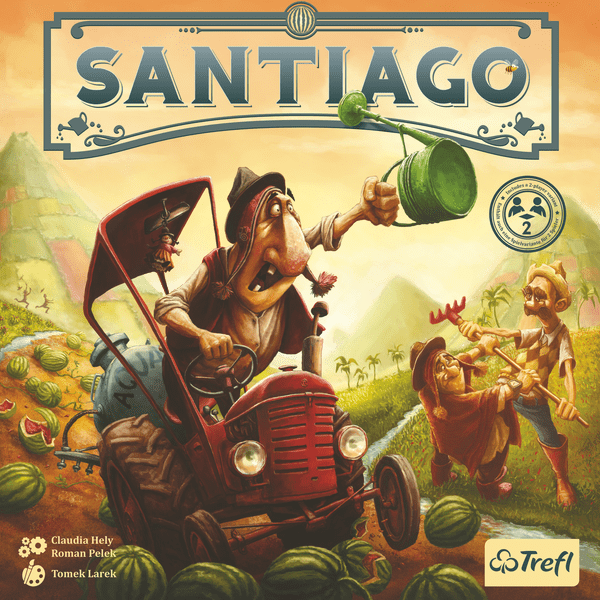Santiago (2003) Board Game
Santiago is a board game that was first released in in 2003. It is a game that combines elements of farming and negotiation, where players must work together to irrigate their fields and negotiate to secure water rights. The game is designed for 3-5 players and has a runtime of approximately 75 minutes. It is suitable for players aged 10 and above and was created by designers Oliver Freudenreich and Tomasz Larek.
Game Components of Santiago
How To Setup Santiago
To set up Santiago, players first arrange the game board, which represents a landscape with various fields that need irrigation. Each player selects a token and places it on the board. The plantation tiles are shuffled and placed face down to be drawn each round. Players also receive a set amount of money for bidding in auctions. The setup ensures that each player has an equal chance to participate in the auctions and start cultivating their fields.
Gameplay Mechanics and Game Objective
Player Experience
Santiago offers a engaging and strategic experience, requiring players to balance their resources between bidding for valuable plantation tiles and ensuring their fields are properly irrigated. The game lasts about an hour, making it a good fit for players looking for a medium-length game session. With its unique blend of auction and resource management mechanics, Santiago challenges players to think ahead and make calculated decisions.
Pros
Cons
Personal Thoughts on Santiago
Santiago is ideal for players who enjoy strategic thinking and auction games. It’s a great choice for experienced gamers looking to add a new challenge to their collection. However, new players might find the rules a bit complex at first, so it’s recommended for those with some experience in board games. The game’s unique mechanics make it a gem for those who appreciate depth and strategy in their gaming experiences.
We are supported by our audience. When you purchase through links on our site, we may earn an affiliate commission, at no extra cost for you. Learn more.

